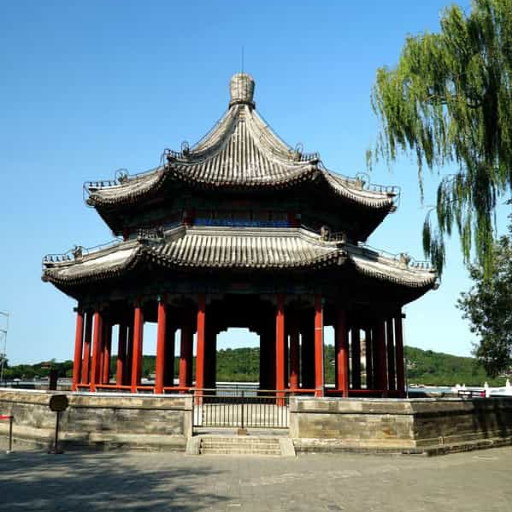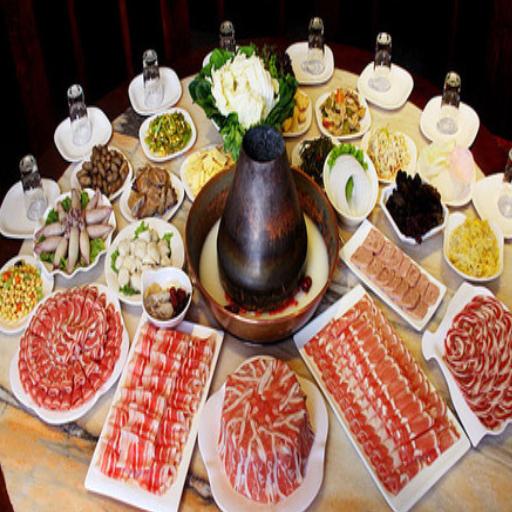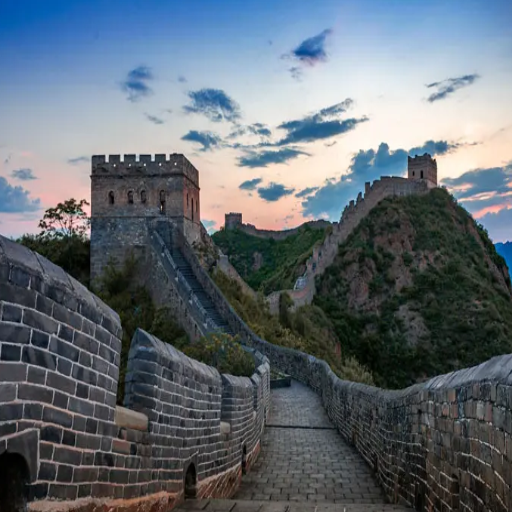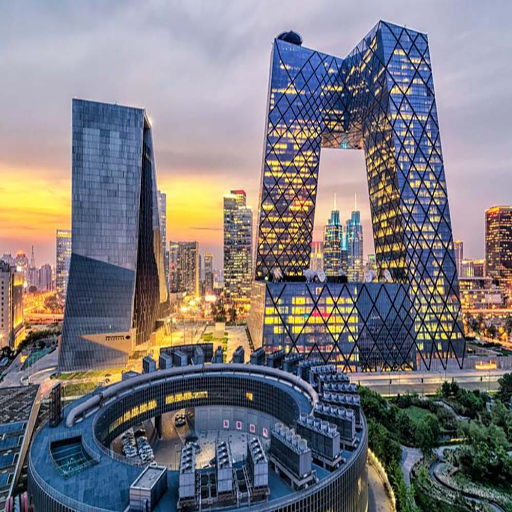As China’s capital city, Beijing is a city where modern innovation meets ancient traditions. Its striking historical sites, as well as the cultural centers, were crafted with unique competencies and imagination, which attract tourists from all over the globe to enjoy the splendid history, art, and local way of life. This article aims to show and describe the best examples of inspiring and astonishing places in the city so that when a visitor comes to the town, he can easily explore them. From the remarkable Great Wall to the majestic Forbidden City to the serene Summer Palace, all parts of the city are beautiful and enchanting. The town is exceptionally splendid, with a rich variety of history and changes that bring each place to tell a story that originated centuries ago.
What Are the Must-See Attractions in Beijing?

Exploring the Historic Forbidden City
An architectural masterpiece, the Forbidden City or Palace Museum served as the imperial palace for the Ming and Qing Dynasties. It lies on 180 acres of land and has 980 buildings with over 8700 rooms, making it the largest ancient palatial structure in the world. The structure was built from 1406 to 1420 and follows feng shui, with harmony and symmetry shown throughout the design.
Location: The center of Beijing, which is north of Tiananmen Square
Architectural Style: Traditional Chinese style blended with gold-plated roofs, red walls, and intricate woodwork.
Dimensions: ~960 meters long north-south,750 meters wide east-west.
UNESCO Status: 1987 marked the year of The Forbidden City becoming a world heritage site due to its cultural value.
Collections: 1.8 million artifacts, including paintings, ceramics, jade, and other items over 5,000 years old, are available.
Tourists can witness China’s cultural treasures by visiting opulent halls such as the Hall of Supreme Harmony.
Why Visit the Majestic Great Wall of China?
An exceptional example of ancient construction, the Great Wall of China represents endurance, defensive might, and cultural skill. Originally built to protect against invasions and facilitate trade along the Silk Road, it covers over 13,000 miles and was constructed across rough terrain.
Length: Goes across mountains, grasslands, and deserts for approximately 21,196 kilometers (13,171 miles).
Construction Period: Over 2000 years, the Qin, Han, and Ming dynasties contributed to the construction.
Materials Used: Stone, bricks, wood, and tamped earth were selected for their ability to survive extreme weather conditions.
Significance: Since 1987, when it became a UNESCO World Heritage site, the wall has provided insight into China’s military history while providing beautiful scenery along its vast miles.
Travelers from all across the globe will now have the chance to see the intricately designed monument around which endless historical stories revolve, making it a truly one-of-a-kind cultural experience.
The Tranquil Beauty of the Temple of Heaven
Historical Background: The Temple of Heaven was built in 1420 during the Ming dynasty. It was a place where emperors would visit once a year to pray for good harvests. It symbolizes the complex connection between heaven and earth in Chinese cosmology.
Architectural Features: The temple is widely known for its circular structures, which represent heaven, and squarish bases, which represent the earth. The Hall of Prayer for Good Harvest features a triple gargled roof but is also renowned for its lack of nails, which is perplexing considering the superb construction work that has gone into it.
Cultural Significance: The Temple of Heaven showcases harmony and prosperity, as well as China’s spiritual and cultural beliefs. It attracts tourists from around the world and has been a UNESCO World Heritage Site since 1998.
The attention to detail is staggering, and the ambient serenity is impressive, making it a perfect place for history enthusiasts and tourists.
What Things to Do in Beijing Should Be on Your List?

Uncovering the Secrets of the Summer Palace
The Summer Palace is one of China’s most remarkable royal gardens, largely untouched over the years. It’s a striking combination of natural and architectural features, comprising twenty-six scenic areas and fragments of traditional Chinese garden art. Initially constructed in 1750, it was restored in 1888 after being damaged during the Second Opium War. This grand palace covers 2.9 square kilometers, with water constituting nearly three-quarters of that area.
Kunming Lake: As the name suggests, this 2.2 sq kilometer lake is the centerpiece of the Summer Palace complex. Similar to the West Lake in Hangzhou, it is famous for enjoyable boat rides across the breathtaking scenery.
Longevity Hill: At 60 meters in height, it serves as a boundary to the Summer Palace Gardens and is dotted with temples and pavilions along its southern and northern slopes, which offer splendid views of the entire park.
The Long Corridor (Chang Lang): Also known as Chang Lang, this decorated corridor is 728m long and adorned with a rich variety of mythological and scenic pictures, totaling over fourteen thousand. It, too, features a multitude of artistic details, which makes it one of the most unique pieces of art.
Marble Boat (Qing Yan Fang): This wooden pavilion is a ‘boat’ meant to symbolize stability. Its composition blends Western and Chinese techniques, most noticed by the stone and wood features.
A visit to the Summer Palace provides an opportunity to engage with its history, remarkable buildings, and picturesque landscapes. The calm setting within its complex and its elastically pleasing composition make it a necessary stop when visiting Beijing.
Strolling Through the Quaint Hutongs
Beijing Hutongs are ancient streets featuring narrow alleyways that are an important part of the city’s history. These neighborhoods are centuries old and are known for their distinctive courtyard (siheyuan) and complex, intimate layout. While these lanes can be explored, visitors appreciate local life and culture, enjoy shopping in traditional stores, and tour well-preserved houses showcasing ancient architectural styles.
From a cultural point of view, the Hutongs are a big part of Beijing’s rich history and way of life. Many have historical names, and the stories of activities that used to be done there make it even more extraordinary. Walking or taking a rickshaw to explore the Hutongs helps tourists experience the less modernized side of the city in contrast to Beijing’s tall, modernized skyscrapers. The Hutongs play an essential role in the identity of Beijing, and for their historical relevance, architectural beauty, and vibrant community life, they are stunning places to visit.
A Cultural Experience at the Lama Temple
Also called Yonghe Temple, Lama Temple is a stunning example of classical Chinese and Tibetan Buddhist architecture. It was constructed during the Qing Dynasty and is culturally and spiritually significant, being one of the largest, most well-preserved lamaseries in China. Upon entering the premises, intricate carvings, bright colors, and a sense of tranquility radiate from the temple, a testament to its holy nature.
Architectural Design: Tibetan and Han Chinese elements blend beautifully at the Temple, which consists of five main halls, each furnished with symbolic decorations and Buddhist artifacts, positioned along a north-south axis.
Spiritual Artifacts: One of the highlights is the 26-meter-tall Maitreya Buddha Statue, which is carved from one single piece of white sandalwood. This achievement holds a Guinness world record.
Cultural Importance: The temple is still in use today, which makes it a point of pilgrimage for many seeking blessings and a point of interest for those wanting to learn more about Tibetan Buddhism.
Every inch explored of Lama Temple is an astonishing blend of Beijing’s spiritual history and cultural craftsmanship.
Where to Experience the Best of Beijing Cuisine?

Indulge in Authentic Peking Duck
A Beijing icon is the Peking Duck, which emits not only the mastery of culinary art but is also known for the rich history of Beijing’s food. Deeply respected for its roasted skin, which is golden brown in color, along with mouth-watering and soft meat, the dish has a rich history. It also requires skilled and sophisticated preparation methods, including air drying the duck, roasting it in closed or open ovens, and using fruitwood for subtle smokey aromas.
Duck selection: Conventionally, a white Beijing duck is utilized for its ideal fat and meat ratio.
Roasting method: The signature flavor is produced using a fruitwood-fueled oven, and jujube or peach wood enhances the taste distinctly.
Thickness of Pancakes: The undeniably important element in serving the wrapped slices of duck mead is the thin pancakes, which are paper-like.
Plating temperature: The duck’s palatable taste and texture can be reserved when it is kept at a serving temperature of 60-65°C (140-149°).
For the visitors trying Peking Duck for the first time, it will always be a landmark journey entire of culture- rich in food history. Quanjude and Da Dong are well-known restaurants serving Peking Duck with so much unique love in Beijing.
A Food Lover’s Guide to Wangfujing Snack Street
Located in the center of Beijing, Wangfujing Snack Street is a lively area for food lovers. The Street is famous for its unique blend of traditional Chinese snacks and other exotic foods, which provide a delightful experience for tourists and locals alike.
Exotic Treats: For the most daring food lovers, Wangfujing serves deep-fried scorpions, starfish, and silk larvae on skewers, which are deep-fried for safety measures. These snacks are a must-try for any bold snack lover.
Sweet and Savory Classics: Try the famous Bingtanghulu snack, which is candied hawthorn. For savory snacks, try Jianbing, a type of Chinese pancake, or dumplings with vegetables and meat.
Cooking Parameters: Other snacks, like the skewers, are deep fried at 180 – 200 degrees Celsius. This renders a crispy exterior and thoroughly cooks the insides.
Street Atmosphere: Open throughout the week, Snack Street comes to life in the evening. The combination of different smells and colorful streetlights makes for a unique experience. However, these features do lead to Snack Street being packed on weekends and holidays.
Whatever the case, Wangfujing Snack Street offers food that showcases Beijing’s unique atmosphere and truly captures this magnificent city’s essence.
The Delights of Beijing Roast Duck
Roast duck, or Peking Duck, as some may call it, is a special dish of Chinese cuisine admired for its highly delectable taste and mouth-watering aroma.
Preparation: To prepare it, the duck is inflated so that the skin separates from the fat layer, making it crispy. Jujube or peachwood is traditionally used to roast the duck in a closed or open oven, ensuring proper cooking methods and serving it with a distinctive flavor.
Serving Style: The duck comes garnished with shredded scallions, thin pancakes, and hoisin sauce. It is sliced into thin pieces, which highly accentuate the flavor and provide a wonderful blend of taste in every bite.
Cultural Significance: The dish was savored by emperors. However, it is now offered to all tourists as a symbol of warmth & hospitality from the Chinese hosts.
Beijing Roast Duck is the most delicious dish because it tastes phenomenal, and I relish how much effort goes into its detailed preparation.
What Are the Top Attractions Around Beijing?

A Daily Visit to the Mutianyu Portion of the Great Wall
My visit to the Mutianyu part of the Great Wall was fantastic. Its scenic views, history, and nature appeal to tourists. This part of the Wall is like the rest, but it is much less populated, enhancing enjoyment during sightseeing and photography. For this reason, I recommend visiting in the early morning. That way, the barriers placed by tourists don’t interrupt your experience. There is nothing quite like seeing the sun set over the structure.
The Mutianyu section is around 2.5 kilometers long and contains 22 watch towers that testify to its strategic significance in ancient times. The gradient here varies, and some areas are incredibly steep, so it is a must to have solid and comfortable footwear. Also, visitors who aren’t as fit may opt to take the cable car or chairlift instead of hiking. The toboggan ride for the descent was wonderfully unique and a great way to end the visit. Regarding food, the Wall has minimal options, so staying hydrated and bringing snacks is advisable. All in all, this day trip is one everyone should try if they want to experience and escape one of China’s most renowned landmarks.
A Walk Among the Ruins of the Old Summer Palace
Going to the Old Summer Palace ruins gifted me with something extraordinary. The remaining parts of the summits, which once held carefully layered gardens, grand architecture, and city-sized aqueducts, told the tragic story of the site’s beauty and glory. I chose to stroll through the ruins to better understand and appreciate the combination of Chinese and Western structures.
The estimate of 350 hectares is an understatement because the Old Summer Palace remained one of the largest of its kind. Unfortunately, the palace was not built for comfort, as many feet have tried to make their pathways and failed. Even wearing comfortable shoes and getting enough depth, I tripped over the remaining pieces, trying to hold their contour. Furthermore, the amount of water and light snacks provided for the vast open space was nowhere near enough. Speaking of lack, there are no other structures near the palace’s beauty, making it harder for those who enjoy taking pictures. I learned the hard way that the beauty of the ruins can only be captured early in the morning and late in the afternoon. I recommend taking in the sights first and spending time with a guidebook or audio guide to understand the majestic place better.
Sothic Culture and Convention at Beihai Park
All these fantastic elements of Nature, incredible lakes, and old temples truly mesmerized the Imperial guards at Beihai Park. Beautiful gardens and serene lakes encapsulated everyone’s attention and still do. The site stretches back almost a thousand years to the old imperial monarchy and served as an imperial garden. Wondering its grounds, one feels their cultural heritage captured and deeply blended with nature. It’s a fantastic destination and indescribably breathtaking.
In short, no highly detailed technical preparations are necessary for the sightseeing activities in Beihai Park, but some tips may improve your experience. Make sure to have walking shoes, as some sections of the paths, for instance, those located around the White Dagoba, are uneven and steep. While the park has introductory provisions, food, and drinks should be brought along if you plan to remain in the area for long periods. From a photographic perspective, if you intend to document the park, I found a wide-angle lens to be extremely helpful with the big views. A polarizer also helped eliminate dazzling reflections while making the greens and blues more saturated. The early morning and evening hours are best for taking pictures because the soft natural light makes the contrast to the park’s features less stark. Following these will give you the best chance to enjoy the rich history and nature that surround you within Beihai Park.
How to Sightsee Efficiently in Beijing?

Traveling the Beijing Subway System
Getting around the Beijing subway is simple and effective, particularly with prior planning. For instance, in my case, I found buying a rechargeable Beijing Transportation Smart Card (Yikatong) to be extremely helpful. Not only did it allow me to skip the line to buy tickets, but it also gave me discounted prices compared to single-use tickets. Subways function from about 5 AM to 11 PM, so these hours are suitable for planning trips for practical travel convenience.
Regarding technology, the rest of the world is currently riding the east metro systems. The subway lines are organized with colors that symbolize the respective routes. Key parameters, like the average 2-to-3 minute interval during peak hours and 5-to-10-minute wait during non-peak, make it an efficient choice. Signs, maps, and announcements are available in Mandarin and English, which helped me immensely. Also, to simplify things, I could download a Beijing subway app that offered real-time information and guided me around delays or confusion. Following everything I mentioned, I found that my subway experience was effortless.
Planning a Day Tour of Iconic Sites
I set out to achieve maximum time without compromising leisurely enjoyment while constructing my day tour of iconic sites. I picked my three main stops, Tiananmen Square, The Forbidden City, and the Temple of Heaven because they are relatively close and provide rich cultural value. Optimizing my route was extremely important. I began at Tiananmen Square, which opens early and then moved to the Forbidden City after booking my tickets to avoid the queues. Later, I planned my visit to the Temple of Heaven for late afternoon. The subway facilitated easy and fast movement to these locations.
Some considerations included opening hours (for the Temple of Heaven, ‘The Forbidden City closes at 3:30 PM on certain days’), estimating travel times (15-20 minutes by subway between sites), and crowd levels, which typically peak around midday. Starting early and pre-purchasing tickets incredibly helped counter delays and allowed me to finish my itinerary. A reliable navigation app with real-time updates helped efficiently transition from one destination to another. The combination of these strategies helped make the day enjoyably seamless.
Hidden Gems: Nanluoguxiang and Beyond
Among all places, Nanluoguxiang struck me as an area where historical Beijing meets the modern day. The narrow alleys, or hutongs, have a rich mix of boutique shops, local cafes, and snack sellers. To optimize my stay, I set aside approximately 2-3 hours here. This allowed me to walk along the main road and the less busy backside alleys, which were more tranquil and provided a more genuine experience.
I depended on a GPS-enabled app that stored points of interest to get the most out of each zone. This advanced my planning, as I knew the most efficient way to get around. I used it late afternoon when the sun provided decent lighting and reasonable crowd sizes. When using the app and photography, my phone was drained, so it was essential to have it charged and a power bank with me.
Suppose one is willing to travel further out from Nanluoguxiang. In that case, I suggest trying the Wudaoying Hutong, a 10-15-minute bike ride away, or Jingshan Park, which has fantastic city views and is even better at sunset. These rounded off the cultural experience alongside the scenic views of the remaining hidden gems of the city.
Frequently Asked Questions (FAQs)
Q: What activities can I engage in to explore the heritage and culture in Beijing?
A: During my stay in Beijing, I ensured I had enough time to visit the Forbidden City, the hutongs, and Jingshan Park, from which one could see the views of the Imperial Palace Section. The National Museum of China and the Ming Tombs are also necessary for anyone interested in history.
Q: What top attractions should a tourist wish to see in Beijing?
A: In addition to the Great Wall, travelers should visit Tiananmen Square, the Temple of Heaven, and the 798 Art District, famous for its art galleries and mesmerizing tea houses.
Q: Why isn’t the Forbidden City considered the centerpiece of Beijing?
A: The mesmerizing architecture tells a history of its own. It is the Palace complex, which even today is the best preserved and one of the biggest in the world. A center of attraction boasting the rich history from the Ming and Qing Dynasties is the Imperial Palace, known as the Forbidden City.
Q: What role do the hutongs play in the Old City of Beijing?
A: The hutongs are the traditional residential areas of Old Beijing, consisting of narrow passages. Their beautiful courtyards allow people to appreciate the culture and lifestyle of the olden days in Beijing, and they are some of the best places to visit.
Q: What interesting sights should I look for on a Beijing night?
A: You should watch the buildings at Tiananmen Square and around it, light up at night, eat some Chinese street food at Wangfujing Night Market, and have a delectable Peking duck at a nearby restaurant. These activities are some of the best things to do in Beijing after dark.
Q: Where can I find some art galleries in Beijing?
A: Of course, there is the 798 Art District, which contains sophisticated artist studios and contemporary art galleries that showcase national and international artists. This area is certainly one of the best places for art lovers and people who want to experience Beijing.
Q: Which sites in Beijing are family-friendly?
A: Chicago is known for the Beijing Zoo, which has some giant pandas on display, and the National Museum of China, which has educational exhibits. Moreover, a trip to the Great Wall could be a fun experience for the entire family.
Q: What must I know to maximize my visit to the Great Wall of China?
A: If you’d like to get the most out of your trip to the Great Wall, try the more remote parts, such as Mutianyu or Jinshanling, as these sections tend to be much less busy. Ensure you prepare for a day trip and wear some comfy shoes; don’t forget water and light food. This is one of the best things you can do when visiting Beijing.
Q: How do I make the most out of my trip to Beijing?
A: If you want to learn more about Beijing’s history, the best strategy is to book a tour guide to take you around the Forbidden City and the National Museum. Engaging with local historians or taking a cultural walking tour is definitely one of the best things to do if you want to experience Beijing.